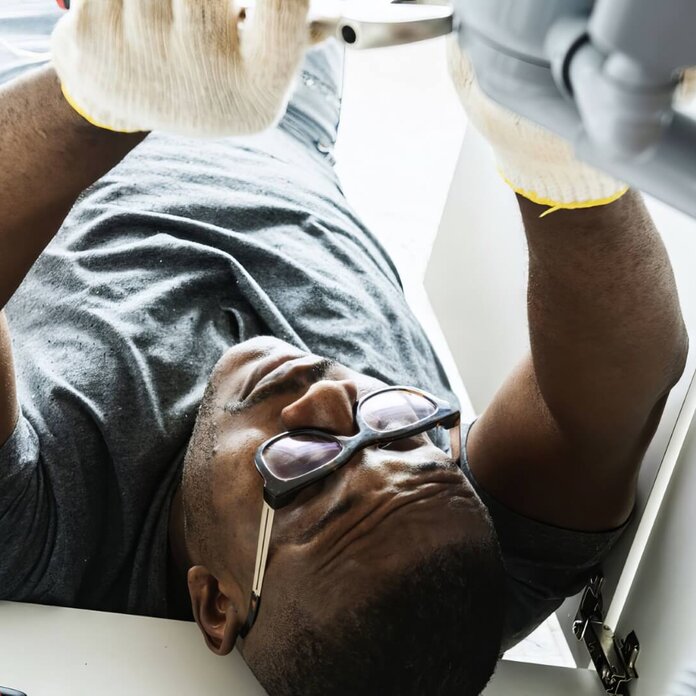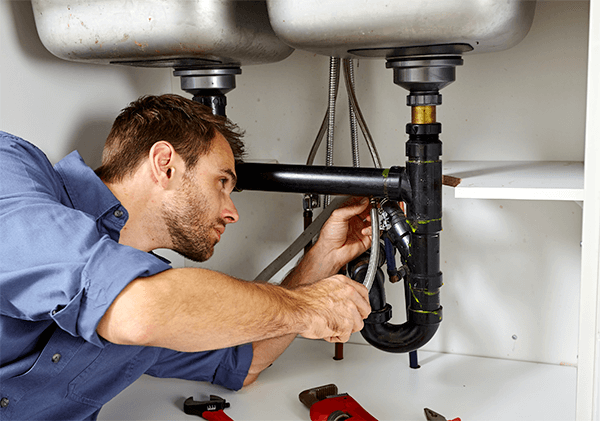They are making a few good observations regarding What to Do While Waiting for an Emergency Plumber overall in this content underneath.

Pipes emergency situations can strike any time, creating anxiety and prospective damages to your home. Whether it's a ruptured pipe, a stopped up drainpipe, or a leaking faucet, understanding how to manage the circumstance up until an expert plumbing professional shows up can conserve you from more complications. This article provides important emergency situation pipes pointers to help you mitigate damages and regain control during a pipes situation.
Switch off the Water Supply
The first step in any type of plumbing emergency situation is to shut down the water. For local concerns, such as a leaking faucet or bathroom, shut off the shutoff near the component. When it comes to a major leak or burst pipe, find your home's primary water shut-off valve and transform it off quickly. Recognizing the location of these valves beforehand can save important time during an emergency.
Address Small Leaks with Short-term Fixes
Small leakages can promptly become considerable issues if left uncontrolled. Use these short-term fixes up until expert aid gets here:
- Pipeline Tape or Epoxy Putty: Apply waterproof tape or epoxy putty to briefly secure the leak.
- Rubber and Clamp Technique: Wrap a piece of rubber or an old internal tube around the leakage and safeguard it with a tube clamp or air duct tape.
- Buckets or Towels: Place buckets under the leak to include water and stop damages to floor covering or furnishings.
- While these solutions aren't permanent, they can assist reduce water loss and damage.
Unclog Drains Safely
A stopped up drainpipe can be a discouraging and untidy problem. Right here's exactly how to tackle it: - Utilize a Plunger: For sinks or bathrooms, a plunger can frequently remove minor blockages. Guarantee you make use of the proper sort of bettor for the component.
- Warm Water and Meal Soap: For grease-related blockages, pour a mix of hot water and dish soap down the drain to break up the oil.
- Avoid Chemical Drainpipe Cleansers: While alluring, chemical cleansers can create even more injury than excellent, specifically to older pipelines.
- If these approaches do not function, stay clear of using too much pressure, as it might get worse the clog.
Take Care Of Overflowing Toilets
An overruning bathroom can trigger instant turmoil. Below's what you need to do: - Stop the Water Flow: Eliminate the storage tank cover and weigh down on the flapper shutoff to quit water from getting in the bowl. Turn off the supply of water to the bathroom if required.
- Dive Carefully: Utilize a bathroom plunger to remove the obstruction, however prevent hostile plunging, which can create spilling or more damages.
- Consist of the Spill: Usage towels or a wipe to tidy up water swiftly to avoid floor covering damages.
Turn off Your Water Heater
In certain emergencies, such as a burst pipeline, it's smart to turn off your hot water heater. This stops overheating or damages to the system when water stops flowing. Switch off the power supply to the hot water heater (electric or gas) and allow it cool off to prevent potential threats.
Briefly Stop a Ruptured Pipe
A burst pipeline can cause significant water damages in minutes. To mitigate the concern:
- Clamp or Wrap the Pipe: Make use of a pipe clamp, rubber, or duct tape as a momentary seal.
- Divert Water Circulation: If possible, draw away the water right into a container or basin to restrict damages to surrounding areas.
- Maintain the Location Dry: Use towels or a wet/dry vacuum to get rid of standing water.
- Call a specialist plumbing technician instantly to address the trouble permanently.
Handle Frozen Piping Very Carefully
In chillier climates, icy pipes are a common emergency situation. If you think an icy pipeline: - Turn Off the Water: Shut down the primary water supply to stop a burst pipe.
- Defrost Slowly: Make use of a hairdryer, heating pad, or cozy towels to thaw the pipeline gradually. Stay clear of open flames or severe warm, as these can damage the pipeline.
- Examine for Leakages: Once the pipe is defrosted, look for cracks or leakages before transforming the water back on.
Avoid Additional Damage
Taking fast action to lessen damage can conserve you time and money in the long run. Here's just how:
- Relocate Valuables: Get rid of furniture, electronics, and various other items from the afflicted location.
- Usage Sandbags: For flooding scenarios, location sandbags around the area to reroute water.
- Shut Off Electrical energy: If water has actually reached electrical outlets or devices, switch off the electricity to avoid shocks or fires.
. Have an Emergency Situation Plumbing Set
Prepare a standard pipes emergency package to handle minor problems properly. Your package should include:
- Adjustable wrench
- Plumbing professional's tape
- Pipeline clamps
- Towels and cloths
- A plunger
- Epoxy putty
- Container.
- Having these devices accessible can make a significant difference in your capability to take care of emergency situations.
Know When to Call a Professional.
While quick fixes can aid temporarily, certain plumbing problems need instant expert focus. Call a plumbing professional if:. - A burst pipe causes extensive flooding.
- Drains or toilets remain blocked in spite of your efforts.
- You discover consistent leakages or water pressure issues.
- Your water heater is dripping or malfunctioning.
- Without delay contacting a professional guarantees the issue is fixed properly and avoids additional issues.
Conclusion.
Plumbing emergencies can be overwhelming, however with the ideal understanding and devices, you can handle the scenario properly till aid gets here. By switching off the water, resolving tiny leakages, and making use of short-lived solutions, you can decrease damages and maintain your home safe. Bear in mind, these ideas are momentary options; constantly seek advice from a certified plumbing to handle the root cause of the trouble. Prep work and fast reasoning are your finest allies in any plumbing emergency situation.
Top Tips for Emergency Plumbing Leak Repairs
Identifying the Leak Source
To properly address a plumbing leak, begin by locating the source using a flashlight and inspecting visible pipes for any signs of water accumulation or dripping. Look for water stains, mold growth, or musty odors which can indicate hidden leaks. Follow the water trail to pinpoint the origin of the leak. Check under sinks, around appliances, and near water heaters as these are common areas for leaks to occur.
If the leak is coming from a visible pipe joint, tightening the connection may solve the issue. Use a wrench to secure the joint without over-tightening, which could cause damage. For small cracks or holes, a temporary fix can be applied using epoxy putty or a pipe clamp until a permanent solution is implemented.
Remember to turn off the water supply before attempting any repairs to prevent further damage. Once the leak is identified, take necessary steps to either fix it yourself or contact a professional plumber for assistance.
Shutting Off the Water Supply
Before initiating any plumbing repairs, make sure you shut off the water supply to prevent further leakage. Locate the main shut-off valve for your property. This valve is typically found near the water meter or where the main water line enters your home. Turn the valve clockwise to shut off the water flow. If you’re dealing with a localized leak, like a sink or toilet, you can also shut off the water supply to that specific fixture by using the individual shut-off valves located underneath or behind the fixture.
Shutting off the water supply is essential to prevent more water from entering the system and causing additional damage. By taking this initial step, you can minimize the extent of the leak and prevent potential flooding in your home. Remember to inform everyone in the household about the water shut-off location in case of future emergencies. Once the water is off, you can proceed with identifying and addressing the leak source to resolve the issue effectively.
Temporary Leak Containment
If you’ve successfully shut off the water supply, the next step is to contain the leak temporarily to prevent further damage. Start by locating the source of the leak. Check for any visible cracks, holes, or burst pipes. Once identified, use materials like duct tape, pipe clamps, or rubber patches to cover the damaged area. For smaller leaks, a bucket or container can be placed underneath to catch dripping water.
If the leak is coming from a pipe joint, tightening the connection with a wrench might help reduce the leakage temporarily. Remember, these are just temporary solutions to prevent immediate damage. It’s essential to contact a professional plumber to assess and fix the issue permanently.
While containing the leak, keep an eye on the affected area for any signs of worsening. If the leak worsens or you’re unable to contain it effectively, don’t hesitate to contact emergency plumbing services for immediate assistance. Taking quick action to contain the leak can help minimize water damage and save you from costly repairs in the long run.
Contacting Emergency Plumbing Services
When facing a plumbing emergency, promptly reach out to professional plumbing services for immediate assistance. Contacting emergency plumbing services is essential to prevent further damage to your property. These professionals have the expertise and tools to address the issue quickly and effectively. When you call for emergency plumbing services, provide as much detail as possible about the leak, its location, and any steps you have taken to contain it. This information will help the plumbers assess the situation and come prepared to tackle the problem.
Ensure that you have the contact information for emergency plumbing services readily available, so you can act swiftly in case of a leak. Many plumbing companies offer 24/7 emergency services, so don’t hesitate to reach out, even if the leak occurs outside regular business hours. By contacting professional plumbers promptly, you can mitigate the damage caused by the leak and restore the functionality of your plumbing system efficiently.
Post-Repair Leak Prevention
To prevent future leaks after repairs, conduct a thorough inspection of all plumbing connections. Start by checking for any signs of corrosion, rust, or wear on pipes, fittings, and fixtures. Tighten any loose connections and replace any damaged parts to guarantee a secure fit. Additionally, inspect the seals around toilets, sinks, and tubs to make sure they’re intact and not deteriorating.
Consider installing water leak detectors in key areas of your home, such as near water heaters, under sinks, and around appliances like washing machines and dishwashers. These detectors can alert you to leaks early on, helping you address them before they cause significant damage.
Regularly monitor your water bill for any unexpected spikes, as this could indicate a hidden leak. If you notice a sudden increase in water usage without a corresponding change in your habits, it’s crucial to investigate the issue promptly.
https://callprofessorplumb.com/articles/top-tips-for-emergency-plumbing-leak-repairs/

I came across that content on Expert Tips for Managing a Plumbing Emergency Until Help Arrives when surfing around the internet. Do you know about anybody else who is serious about the topic? Why not promote it. I praise you for your time. Return soon.
Book A Service
Comments on “Temporary Tips for Critical Situations: Steps to Follow Until Help Arrives”